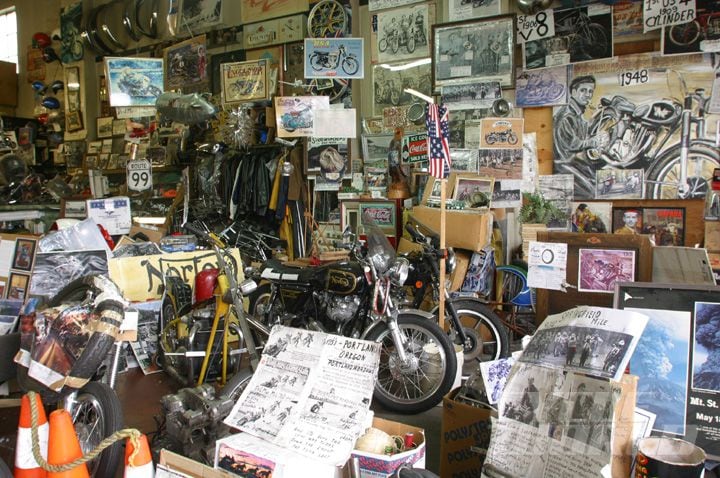Understanding the Vital Parts of a Motorbike: A Comprehensive Overview for Enthusiasts
For bike fanatics looking to elevate their riding experience and ensure their bikes run efficiently, recognizing the vital elements of a bike is extremely important. Each component, from the engine's intricate operations to the vital role of the braking systems, not just influences performance but additionally safety and security and comfort.
Engine Elements

The camshaft plays a crucial duty in managing the timing of the engine's valves, guaranteeing the precise opening and closing essential for reliable fuel and air consumption, as well as exhaust expulsion. This timing is essential to maintaining optimal engine efficiency and performance. In addition, the carburetor or gas injection system, relying on the motorbike model, is in charge of blending air with gas in the proper proportion for burning.
The cooling system, either air or liquid-based, works to maintain the engine's temperature within functional limitations, preventing overheating and ensuring longevity - motocross gear nz. Each component, thoroughly designed and incorporated, adds to the smooth operation of the engine, defining the motorcycle's power result and general performance
Transmission System
Essential to the bike's functionality, the transmission system makes sure efficient power transfer from the engine to the wheels. This system consists of a number of critical elements, including the clutch, transmission, and last drive, each playing an essential role in translating the engine's power into movement. The clutch, commonly run by a hand bar, serves to involve and disengage the engine from the transmission, permitting smooth gear changes and controlled acceleration.
The transmission, usually referred to as the transmission correct, contains a collection of gears that riders can manually change through to change the bike's rate and torque output. These gears are organized in a sequence that allows the motorbike to accelerate efficiently and maintain optimal engine performance throughout different rates. The majority of bikes use a consecutive gearbox, needing the biker to change gears in a fixed order.
Braking Systems
While recognizing the transmission system is crucial to utilizing a bike's power, equally crucial is the ability to manage and quit that power successfully, which is where stopping mechanisms come into play. Brakes are vital for security and efficiency, providing the motorcyclist with the necessary control to navigate different terrains and conditions. Normally, motorcycles feature two types of stopping systems: disc brakes and drum brakes.
Disc brakes are more prevalent in modern-day motorbikes as a result of their exceptional efficiency. They contain a brake disc, caliper, and pads. When activated, the caliper squeezes the brake pads versus the rotating disc, transforming kinetic power into warm, therefore reducing the wheel. This system supplies much better warm dissipation, constant efficiency, and improved quiting power, especially in wet conditions.
Alternatively, drum brakes, though much less usual, are still located in some motorbikes. They function by pushing brake shoes against the internal surface area of a drum affixed to the wheel. While usually much less efficient in heat dissipation and stopping power, drum brakes are simpler and extra affordable.
Recognizing these braking systems' subtleties allows cyclists to preserve their bikes properly and value the design that makes sure risk-free and effective quiting.
Suspension and Steering
Suspension and steering systems are essential elements that substantially affect a motorcycle's handling and trip convenience. dirt bike riding gear The suspension system, containing forks at the front and shock absorbers at the back, soaks up road abnormalities, enhancing stability and control. Front forks, usually telescopic or inverted, compress and rebound to minimize influences, while rear shock absorbers preserve tire call with the roadway, important for grip and safety.
Guiding, centered around the handlebars, links the rider to the bike's directional control. The steering head bearings ensure smooth procedure, allowing exact maneuverability. Appropriate alignment and upkeep of these bearings are important for predictable guiding response and minimizing biker fatigue.
The suspension's adjustability is another essential aspect; preload, damping, and rebound setups enable customization to fit numerous riding conditions and styles. This flexibility is vital for enhancing efficiency, whether browsing metropolitan roads or tackling tough routes. Advancements like digital shock absorber supply real-time adjustments, boosting ride top quality across varied surfaces.

Electric Systems
After ensuring a regulated and smooth adventure through reliable suspension and guiding systems, focus turns to the electrical systems, a crucial aspect of modern motorcycles. These systems play a vital duty not only in beginning the engine news however likewise in powering different elements that boost the capability more and safety and security of the motorcycle.
At the heart of a motorcycle's electrical system is the battery, which stores electric energy required for starting the engine and powering complementary systems - moto parts nz. The alternator or generator, paired with the rectifier-regulator, ensures the battery remains charged while the motorbike is in procedure, converting mechanical energy into electric power and preserving voltage levels
The ignition system, one more vital component, is in charge of sparking the air-fuel blend in the engine's cylinders. Modern motorcycles often use a digital ignition system, using better performance and dependability compared to typical systems.
Lights systems, consisting of headlights, tail lights, and indicators, are also vital, ensuring presence and safety for the motorcyclist. Additional electronic elements such as sensing units, control systems, and shows add to innovative functions like fuel injection management, anti-lock braking systems (ABDOMINAL MUSCLE), and digital dashboards, better boosting the riding experience.
Final Thought
A detailed understanding of a motorcycle's important components, including the engine, transmission system, braking mechanisms, suspension, guiding, and electric systems, is crucial for fanatics aiming to maximize convenience, security, and efficiency. Proficiency of these aspects permits for notified decisions relating to maintenance and upgrades, inevitably improving the riding experience. By incorporating this understanding, cyclists can guarantee their bikes run at peak efficiency and integrity, therefore making best use of both enjoyment and durability of their automobiles.
For bike fanatics looking to boost their riding experience and guarantee their bikes run efficiently, understanding the important elements of a motorbike is critical.Indispensable to the motorcycle's functionality, the transmission system ensures efficient power transfer from the engine to the wheels.While recognizing the transmission system is crucial to using a bike's power, similarly important is the capacity to control and quit that power effectively, which is where stopping mechanisms come right into play. Commonly, motorcycles include 2 types of stopping systems: disc brakes and drum brakes.
A thorough comprehension of a motorbike's essential parts, consisting of the engine, transmission system, stopping mechanisms, suspension, guiding, and electrical systems, is important for enthusiasts aiming to optimize safety, efficiency, and convenience.